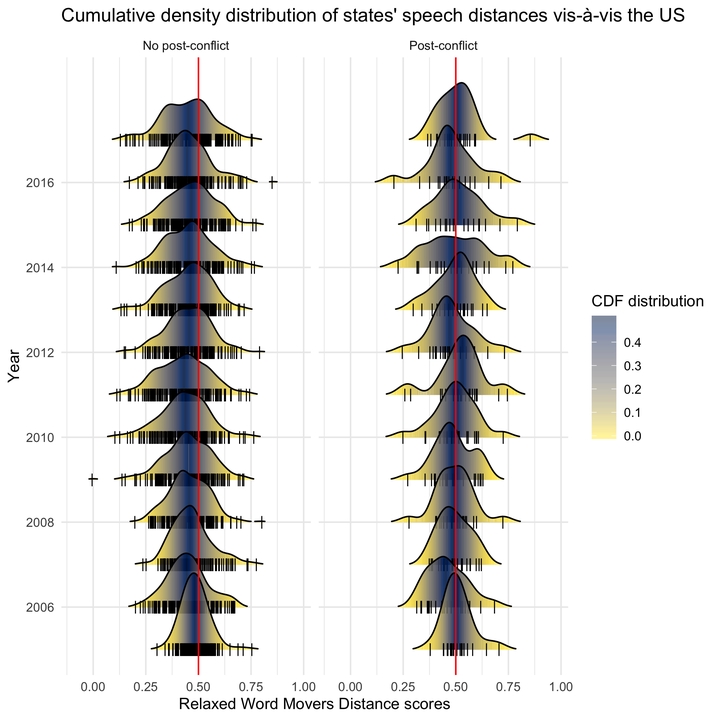
build with: ♥ | R | Google Cloud Computing | sparse factor analysis | tidyverse | quanteda
Impact
This project was presented at the following conferences and workshops:
- PIPC 2019 Conference, Taipei, Taiwan - 3rd Pacific International Politics Conference (PIPC)
- EPSA 2019 Conference, Belfast, UK - 9th Annual Conference of the European Political Science Association (EPSA)
- DAGStat 2019 Conference, Munich, Germany - 5th Joint Statistical Meeting DAGStat Conference 2019
- Social Science Data Lab 2018, Mannheim, Germany - Social Science Data Lab - Text as Data Roundtable Part I
- TADA 2018 Conference, Seattle, US - 9th Annual Conference on New Directions in Analyzing Text as Data (TADA)
Academic Abstract
Countries often say one thing in speeches but do the other when they vote. Why is this the case? I argue that vote-buying by powerful donor states induces, under certain circumstances, states to vote differently than what they said before. The logic goes as follows. Donors attempt to buy votes in order to legitimize their international policy agenda vis-à-vis their domestic audience – the so-called vote-buying practice – and reveal their voting preferences through public speeches as focal points to potential supporters. Recipients, by contrast, use speeches to signal their domestic audience that they advocate for national interests in the international arena but deviate from these positions to extract aid from voting in-line with a donor. I expect them to do so either when they are highly aid-dependent, suffer less from audience costs for defection due to less transparent domestic institutions or a combination of both. I test my argument by scaling states’ speeches from UN General Assembly votes and speeches at the UN General Debate using sparse factor analysis. If my theory holds, the systematic difference between states’ votes and speeches can be explained by US foreign aid payments that result from increasing vote alignment with the US voting position.